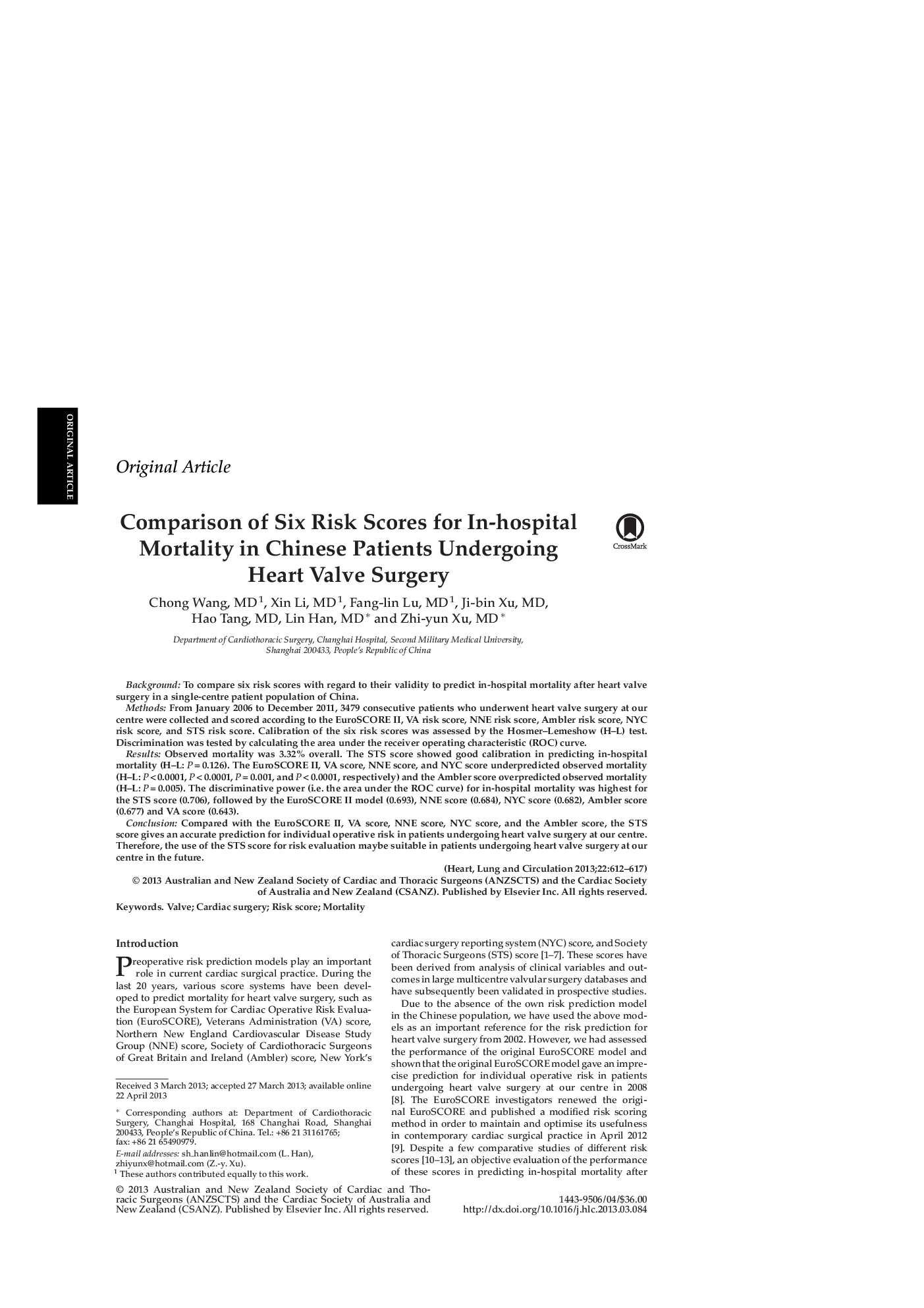| Article ID | Journal | Published Year | Pages | File Type |
|---|---|---|---|---|
| 2918093 | Heart, Lung and Circulation | 2013 | 6 Pages |
BackgroundTo compare six risk scores with regard to their validity to predict in-hospital mortality after heart valve surgery in a single-centre patient population of China.MethodsFrom January 2006 to December 2011, 3479 consecutive patients who underwent heart valve surgery at our centre were collected and scored according to the EuroSCORE II, VA risk score, NNE risk score, Ambler risk score, NYC risk score, and STS risk score. Calibration of the six risk scores was assessed by the Hosmer–Lemeshow (H–L) test. Discrimination was tested by calculating the area under the receiver operating characteristic (ROC) curve.ResultsObserved mortality was 3.32% overall. The STS score showed good calibration in predicting in-hospital mortality (H–L: P = 0.126). The EuroSCORE II, VA score, NNE score, and NYC score underpredicted observed mortality (H–L: P < 0.0001, P < 0.0001, P = 0.001, and P < 0.0001, respectively) and the Ambler score overpredicted observed mortality (H–L: P = 0.005). The discriminative power (i.e. the area under the ROC curve) for in-hospital mortality was highest for the STS score (0.706), followed by the EuroSCORE II model (0.693), NNE score (0.684), NYC score (0.682), Ambler score (0.677) and VA score (0.643).ConclusionCompared with the EuroSCORE II, VA score, NNE score, NYC score, and the Ambler score, the STS score gives an accurate prediction for individual operative risk in patients undergoing heart valve surgery at our centre. Therefore, the use of the STS score for risk evaluation maybe suitable in patients undergoing heart valve surgery at our centre in the future.
